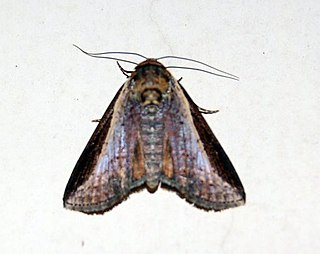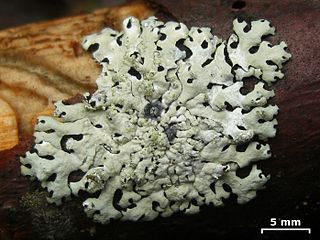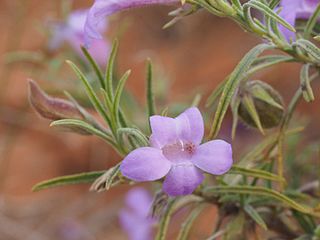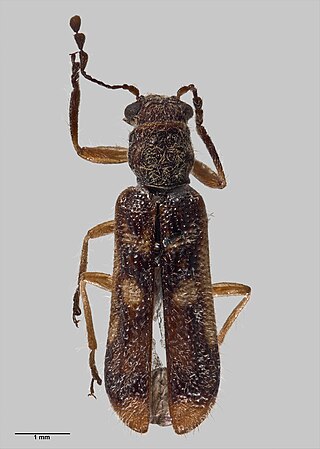
Hierodula is a genus of praying mantids in the tribe Hierodulini, found throughout Asia. Many species are referred to by the common name giant Asian mantis because of their large size compared to other mantids. Their large size and vibrant coloration make Hierodula mantids popular in the pet trade. Some widespread species include H. membranacea and H. patellifera; however this has been considered a 'catch all' genus and is currently subject to review. In 2020, three species were moved to a new genus, Titanodula.
Hierodula pustulifera is a species of praying mantis in the family Mantidae.

Lophoptera is a genus of moths of the family Noctuidae.
Saroba is a genus of moths of the family Noctuidae.

Hypotrachyna is a genus of lichenized fungi within the family Parmeliaceae. According to the Dictionary of the Fungi, the widespread genus contains about 198 species. Hypotrachyna was circumscribed by American lichenologist Mason Ellsworth Hale Jr in 1974.

Canoparmelia is a genus of lichen-forming fungi in the family Parmeliaceae. The widespread genus contains about 35 species. Canoparmelia, a segregate of the parmelioid lichen genus Pseudoparmelia, was circumscribed by John Elix and Mason Hale in 1986.

Pyrgomorphidae is a family of grasshoppers in the order Orthoptera; it is the only family in the superfamily Pyrgomorphoidea, with a pan-tropical distribution. Their name is probably derived from pyrgos meaning "tower": a reference to the form (morph) of the head in the type genus Pyrgomorpha and other genera.

The blistered pyrgomorph is a species of wingless grasshopper of the family Pyrgomorphidae, endemic to Australia.

Eremophila gilesii, commonly known Charleville turkey bush, green turkey bush, desert fuchsia and Giles emu bush is a flowering plant in the figwort family, Scrophulariaceae and is endemic to Australia. It is usually a low, spreading shrub with pinkish-lilac to purple flowers and is widespread in the Northern Territory and all mainland states except Victoria. It is considered a difficult agricultural weed in some parts of Queensland but is often used as a bush medicine by Aboriginal people.
Melaenosia is a genus of spiders in the family Mimetidae. It was first described in 1906 by Simon. As of 2017, it contains only one Indian species, Melaenosia pustulifera.

Neottiura is a genus of comb-footed spiders that was first described by Anton Menge in 1868.

Phymatophaea is a genus of checkered beetles in the subfamily Enopliinae.
Saroba pustulifera is a moth of the family Noctuidae first described by Francis Walker in 1865. It is found in the Indian subregion, Hong Kong, Thailand, Sundaland, Sulawesi and Sri Lanka.

Monistria is a genus of grasshoppers in the family Pyrgomorphidae and the tribe Monistriini. Species are found Australia, New Zealand and surrounding islands.









